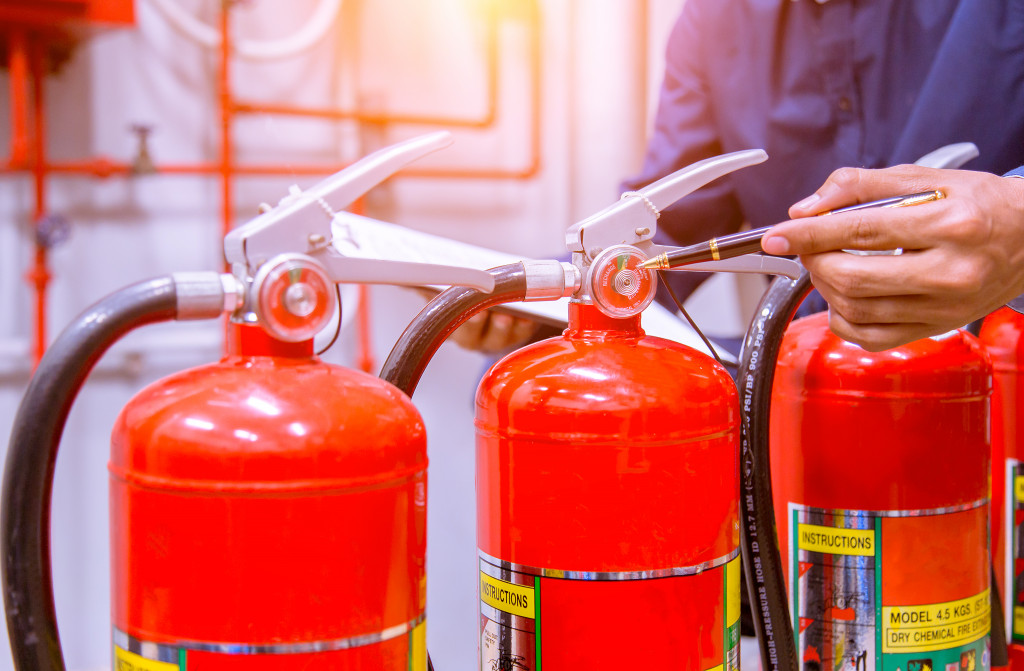The workplace has become an integral part of our lives. In fact, recent statistics show that we spend one-third of our lives at work. This is equivalent to 90,000 hours spent in the office in a lifetime.
As we spend most of our time at work, it is more than fitting that we would want to keep our workplace safe and secure. However, the office has become one of the most common locations for accidents. According to the International Labor Organization, around 2.3 million workers globally suffer from work-related accidents or illnesses every year. What’s worse is that more than 6,000 workplace fatalities are being recorded every day across the globe, according to recent statistics.
One culprit of such fatalities and property damages are fire accidents. Fires account for nearly 3% of work-related deaths each year, according to recent figures. Between 2011 and 2015 alone, fire departments in the U.S. responded to a yearly average of almost 38,000 fire accidents in industrial and manufacturing worksites, according to the National Fire Protection Association (NFPA). Such a catastrophe has led to 16 civilian fatalities, 273 injuries, and a staggering $1.2 billion worth of property damages.
Meanwhile, in 2018 alone, around 103,600 non-residential fires were reported in the U.S., according to the U.S. Fire Administration. Such a tragedy resulted in 85 deaths, 1,025 injuries, and nearly $2.7 billion worth of property losses.
So, who is responsible for fire safety at work?
While everyone is responsible for maintaining a safe environment in the workplace, the legal responsibility for fire safety at work falls to the business owner or the employer. Failure to maintain fire safety in the workplace could mean expensive legal complications, license suspensions, or worse, permanent business closure altogether.
To avoid such complexities, here are some major responsibilities on fire safety that business owners and employers must fulfill:
1. Performing a regular fire safety risk assessment
Employers must assign a fire safety officer who will conduct the fire safety risk assessment regularly. Federal laws require companies having more than five employees to document the risk assessment. The inspection should include:
- Identifying potential fire safety hazards and those that are of high risk in case of fire emergencies
- Assessing and implementing suitable fire safety measures and evacuation procedures
- Documenting the findings of the assessment
- Regular updating of the assessment for improvement
2. Creating a workplace fire preparedness plan
Employers are obligated to establish a fire preparedness and emergency action plan to limit fire accidents at work. The results from the fire safety risk assessment will help implement the fire preparedness plan.
Fire emergency plans must cover fire prevention and control if a fire breaks out, including emergency procedures and escape routes. The Occupational Safety and Health Administration (OSHA) suggests businesses designate responsibilities of employers and employees in ensuring safety from fire and other emergencies. OSHA also requires businesses with over 10 employees to document their emergency action plans in writing.
Additionally, business owners are required to conduct a fire drill once or twice a year to ensure the effectiveness of their emergency action plan. This will also allow employers to make certain improvements if needed.
3. Providing the necessary fire safety equipment

Federal laws require store owners and building administrators to install appropriate fire safety equipment in offices. These include fire alarms, fire extinguishers, sprinkler systems, emergency signages, emergency lighting, among others.
Employers are also encouraged to store special equipment like fire-resistant clothing, megaphones, and traffic control wands that fire safety officers may use to evacuate employees in the event of a fire emergency.
Also, companies must inspect such fire safety equipment regularly to ensure that they are functioning properly. Necessary replacements and repairs must be made to avoid further complications in the event of an emergency.
4. Regular inspection of electrical systems
Faulty wiring is known to be the third leading cause of fires in the U.S. Recent figures from the NFPA showed that between 2011 and 2016, nearly 45,000 fires caused by electrical failure or malfunction were recorded each year.
To combat this, commercial space owners and building administrators are urged to regularly inspect the electrical and mechanical systems, ensuring no electrical hazard present in the workplace.
5. Educating employees on fire safety
Aside from conducting risk assessments and installing fire protection equipment, employers are also mandated to train their staff in fire safety procedures and proper handling of fire protection tools. OSHA obligates employers to conduct such training at least once a year.
Fire accidents in the workplace often happen without warning. However, such tragedies may be reduced by implementing fire safety protocols at work, with employers taking the lead.

